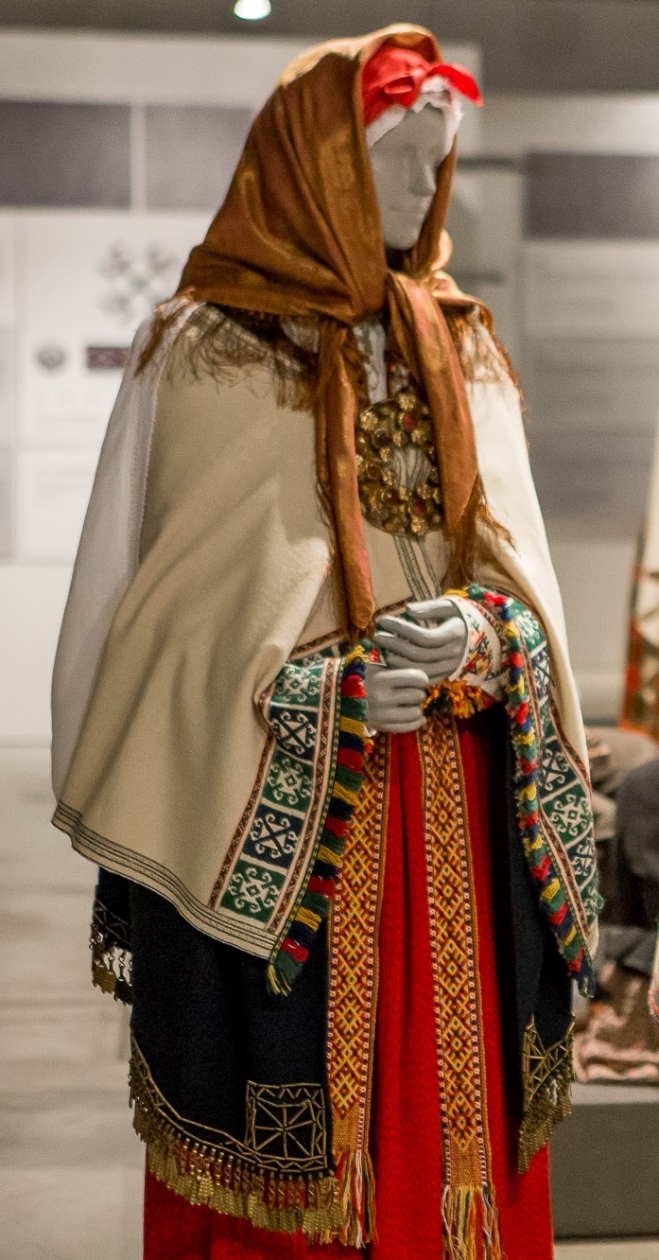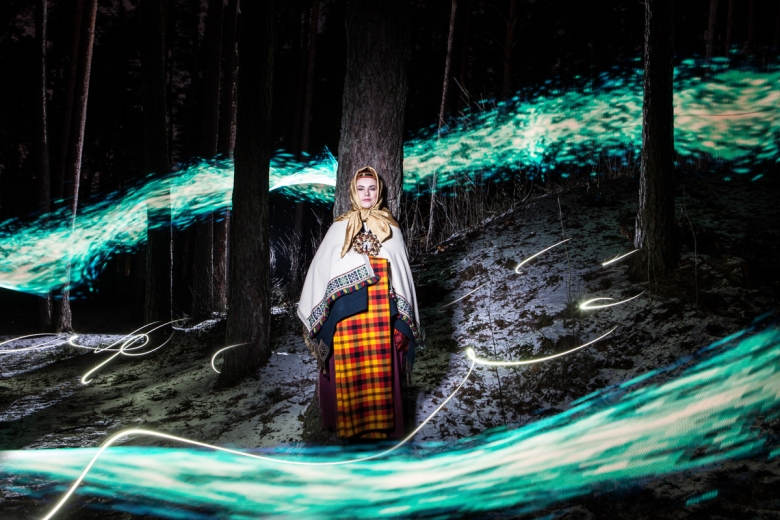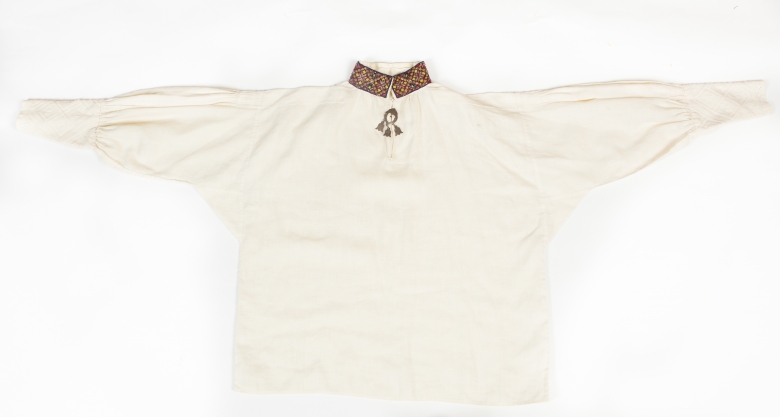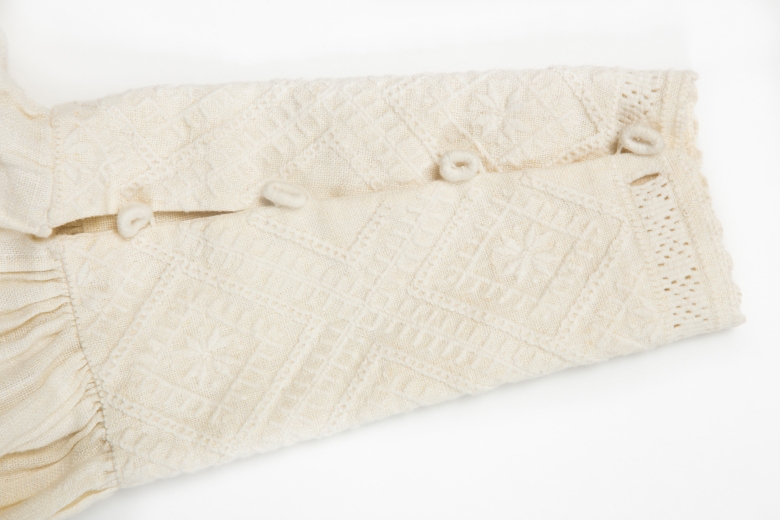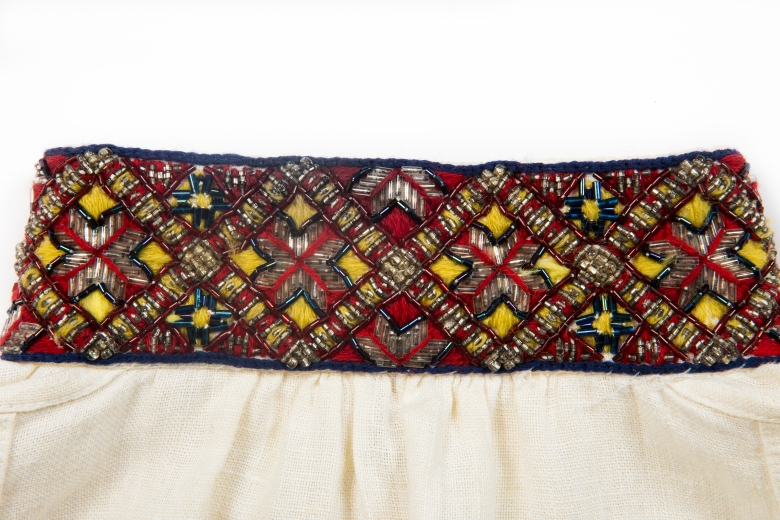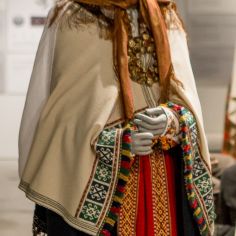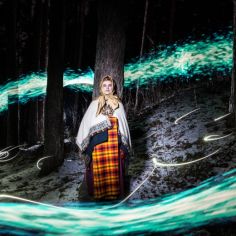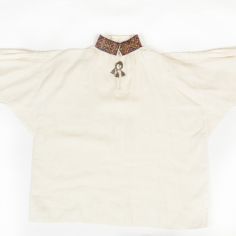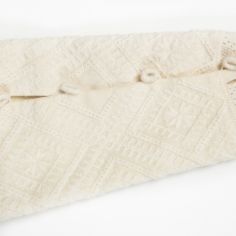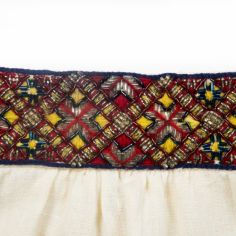Women’s Clothing from Alsunga
Brief information
- Shirts – straight cut, mid-calf linen shirt with multi-coloured embroidery; a stand-up collar embroidered in a solid colour or with multi-coloured glass bugle beads, as well as wide embroidered cuffs;
- Skirts – a jumper-type dress with a raised waistline and an attached bodice made of different fabric; fabric is solid or pinstriped, red and violet hues dominate;
- Belts – woven patterned belts or brass chain belts with engraved or embossed front panels (sleņģene);
- Jackets – short, ending at the raised waistline; embroidered with multi-coloured yarn or glass bugle beads;
- Shawls – a number of different types: a dark blue Shawl with bronze ornamentation, a white Shawl with multi-coloured embroidery, and plaid Shawls in either red, yellow and black, or black and white;
-
Headdresses:
- Unmarried women wore a narrow, bronze band coronet-type vainags, edged with spangles (small, round, domed discs), on a red or green fabric base;
- Married women wore several large headscarves over a headcloth or linen cap;
- Legwear – knitted brightly coloured, knee-length socks;
- Jewellery – Shawls were fastened with large bronze disc brooches (saktas), set with a number of polished glass stones; shirts were fastened with small to medium size annular brooches (saktas) or fabric ribbons.
History and Origin
Women’s clothing from Alsunga is characterized by a long, mid-calf length linen shirt in one of two styles. One style consists of separate, rectangular fabric pieces sewn together at the shoulders, while the other has a one piece body, where the front and back consist of one contiguous piece of fabric folded over at the shoulders. The shirt has a detachable collar and wide cuffs. The collar is embroidered with dark blue yarn or glass beads. The cuffs are embroidered with white or unbleached linen thread; alternatively with multi-coloured yarn. The shirt is fastened with a small to medium size sakta, set with polished glass stones.
Skirts have an attached bodice and a raised waistline, in colours ranging from bright red to violet. The fabric may be variegated or pinstriped. Variegation is achieved by ikat dying the warp or using two different shades in the warp.
Belts can be either woven or bronze. There are four different types of woven belts with both single and multiple motifs. The bronze chain belt has an embossed or engraved front panel.
There are a number of different jacket styles. These are all short and include black wool jackets with multi-coloured embroidery or glass bead embellishment, as well as red wool or cotton floral fabric jackets with ribbon trim.
There are three different types of Shawls: dark blue, white, and plaid. The dark blue Shawl with bronze spiral ornamentation and pendants along the sides are considered the oldest style. The white wool Shawl has wide borders of multi-coloured embroidery or interwoven patterns. There may also be tablet-woven chevron-patterned bands along the sides. The plaid Shawl may be black and white, or in bright colours with yellow, red, and black dominating, although blue and white may also be present. The Shawls are worn over both shoulders, so that each one is partially visible and secured with a large bronze disc brooch (sakta), containing relief-work elements and polished red glass stones.
The unmarried women’s headdress was a narrow (two to three centimetre wide) bronze band coronet-type vainags, edged with spangles (small, domed discs) on a red or green fabric base.
Married women wore several large headscarves over a headcloth or linen cap. Each scarf was tied in a different manner.
Socks are knee-length, knitted in vivid colours and intricate patterns, fastened below the knee with patterned woven bands.
Footwear consisted of closed, low-heeled black shoes, fastened with a cord or leather strap.
